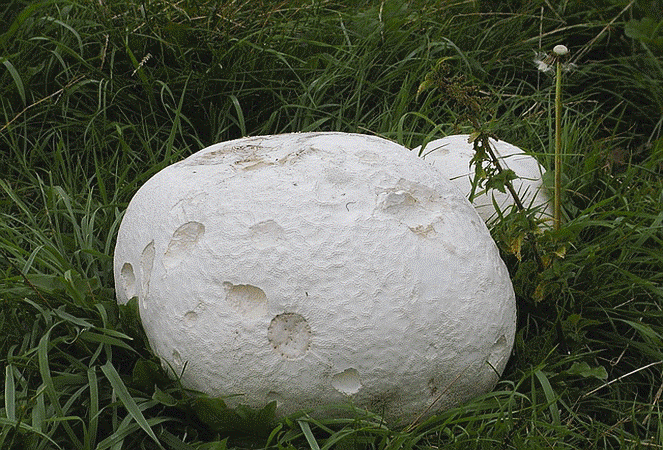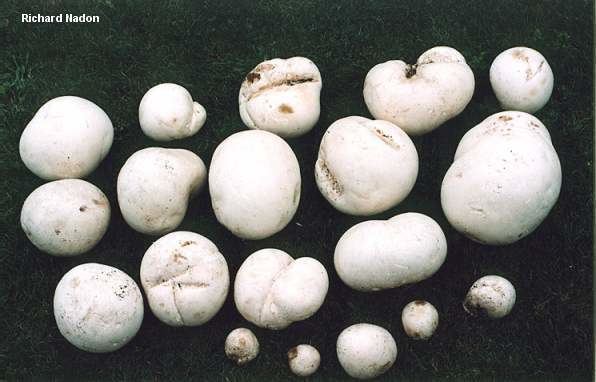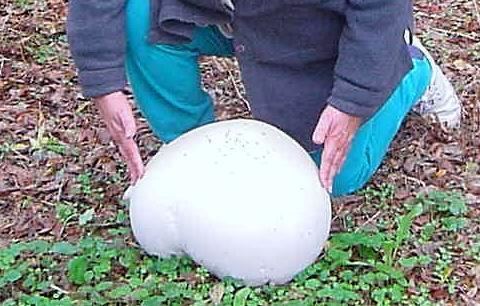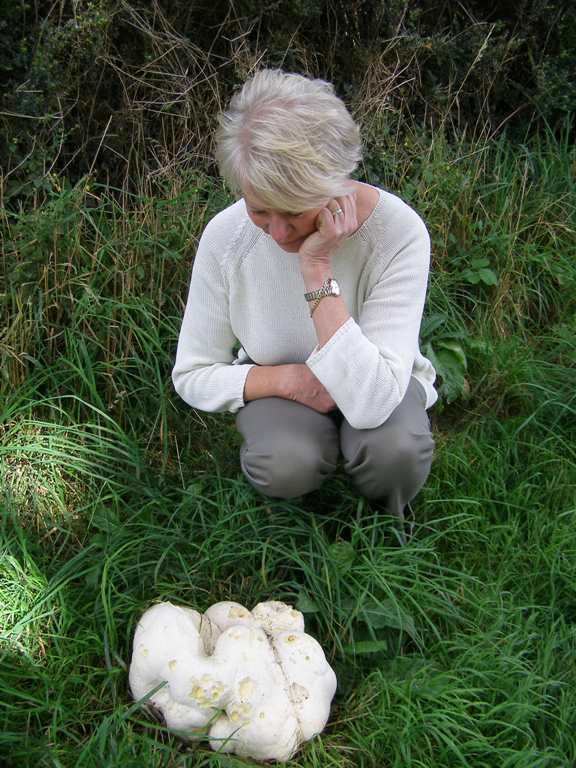Kingdom Fungi Order Agaricales | Phylum Basidiomycota Family Agaricaceae Scientific name Calvatia gigantea Rank Species | |
Similar Calvatia, Lycoperdon, Lycoperdon perlatum, Macrolepiota procera, Lycoperdon pyriforme | ||
Calvatia gigantea, commonly known as the giant puffball, is a puffball mushroom commonly found in meadows, fields, and deciduous forests usually in late summer and autumn. It is found in temperate areas throughout the world.
Contents

Description

Most giant puffballs grow to be 10 to 70 centimetres (3.9 to 27.6 in) in diameter, although occasionally some can reach diameters up to 150 centimetres (59 in) and weights of 20 kilograms (44 lb). The inside of mature Giant puffballs is greenish brown, whereas the interior of immature puffballs is white. The large white mushrooms are edible when young.

The fruiting body of a puffball mushroom will develop within the period of a few weeks and soon begin to decompose and rot, at which point it is dangerous to eat. Unlike most mushrooms, all the spores of the giant puffball are created inside the fruiting body; large specimens can easily contain several trillion spores. Spores are yellowish, smooth, and 3 to 5 micrometres (0.00012 to 0.00020 in) in size.

The classification of this species has been revised in recent years, as the formerly recognized class Gasteromycetes, which included all puffballs, has been found to be polyphyletic. Some authors place the giant puffball and other members of genus Calvatia in order Agaricales. Also, the species has in the past been placed in two other genera, Lycoperdon and Langermannia. However, the current view is that the Giant Puffball is Calvatia.
Conservation status
"Widespread and fairly common, and not considered of conservation concern in the UK. However, it is protected in parts of Poland and considered rare in Lithuania and of conservation concern in Norway."
Cooking

All true puffballs are considered edible when immature, but can cause digestive upset if the spores have begun to form, as indicated by the color of the flesh being not pure white (first yellow, then brown). Immature gilled species still contained within their universal veil can be look alikes for puffballs. To distinguish puffballs from poisonous fungi, they must be cut open; edible puffballs will have a solid white interior. Some similar mushrooms have the white interior (or yellowish) but also have the silhouette of a cap-type mushroom on the interior when cut open. These are young cap-type mushrooms and may be poisonous.
Medical uses
It is a known styptic and has long been used as wound dressing, either in powdered form or as slices 3 cm thick. The fungus was often harvested prior to battles for this purpose.
It is the main source of the anti-tumor mucoprotein calvacin, which is present only in tiny quantities.
Similar fungi
Giant puffballs resemble the earthball (Scleroderma citrinum). The latter are distinguished by a much firmer, elastic fruiting body, and having an interior that becomes dark purplish-black with white reticulation early in development.
